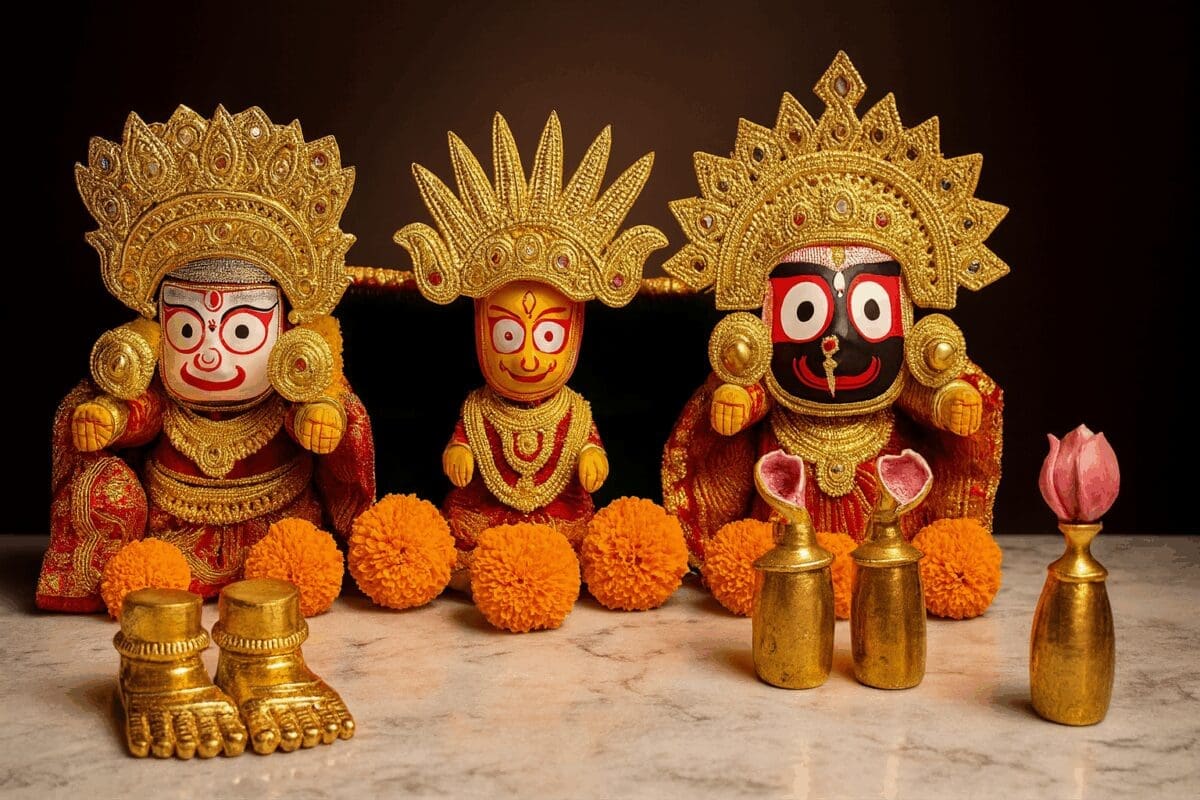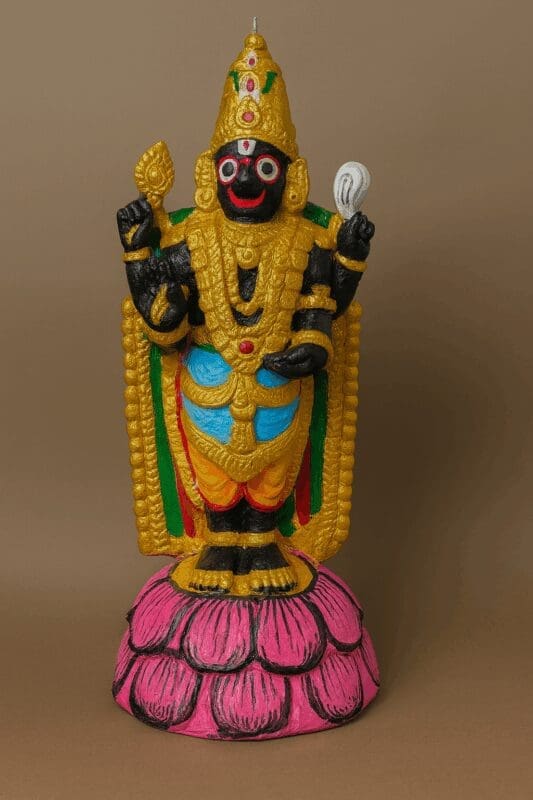Shri Jagannath purana
Nrsimha’s Sanctuary: Building a Temple of Devotion (Ch. 16)
Nrsimha’s Sanctuary: Building a Temple of Devotion (Ch. 16)
Chapter 16 of the “Sri Jagannath Puran” shifts our attention to the construction of a temple dedicated to Lord Nrsimha, the fierce man-lion incarnation of Vishnu, within the sacred complex of Purushottama Kshetra. As a historian fascinated by the tangible expressions of faith, this chapter offers a captivating glimpse into the architectural endeavors inspired by divine visions and the role of sacred spaces in shaping religious practices.
A Temple Takes Shape: Divine Guidance and Human Effort
The chapter describes how King Indradyumna, guided by divine inspiration, commissions the construction of a magnificent temple dedicated to Lord Nrsimha. The celestial architect Vishwakarma, renowned for his divine craftsmanship, is entrusted with the task of bringing this vision to life.
Historically, temple construction in ancient India was a grand undertaking, often involving royal patronage, skilled artisans, and elaborate rituals. The “Sri Jagannath Puran” reflects this tradition by portraying the Nrsimha Temple as a majestic structure, adorned with intricate carvings and imbued with spiritual significance.
Symbolism and Significance of Sacred Architecture
The construction of the Nrsimha Temple within the Jagannatha complex highlights the multifaceted nature of Hindu worship and the harmonious coexistence of different deities and traditions. Nrsimha, with his fierce and protective attributes, complements the benevolent and compassionate aspects of Lord Jagannatha, creating a balanced representation of divine power and grace.
Temples in ancient India served not only as places of worship but also as centers of social and cultural life. They were spaces where communities gathered, rituals were performed, and knowledge was transmitted. The construction of the Nrsimha Temple signifies the importance of creating dedicated spaces for spiritual practice and fostering a sense of community among devotees.
Mystical Underpinnings: The Role of Divine Inspiration
The chapter emphasizes the role of divine inspiration in the temple’s construction. Vishwakarma, the celestial architect, is said to have built the temple with divine speed and precision, imbuing the structure with sacred energy. This mystical element highlights the belief that divine forces actively participate in the creation of sacred spaces, lending them an aura of sanctity and power.
The narrative also suggests that the temple’s location was divinely chosen, further reinforcing the notion that Purushottama Kshetra is a land imbued with spiritual significance.
Connecting with the Present: The Enduring Power of Sacred Spaces
The story of the Nrsimha Temple’s construction continues to resonate with those who visit and worship at the Jagannatha Temple complex today. It serves as a reminder of the human capacity to create sacred spaces dedicated to the divine and the transformative power of such spaces in fostering spiritual growth and community.
For the modern reader, this chapter offers a glimpse into the architectural and spiritual heritage of ancient India. It encourages us to appreciate the artistry and devotion that went into creating these magnificent structures and to recognize the enduring power of sacred spaces to inspire and uplift the human spirit.
https://justkalinga.com/wp-admin/post.php?post=15688&action=edit&classic-editor



















